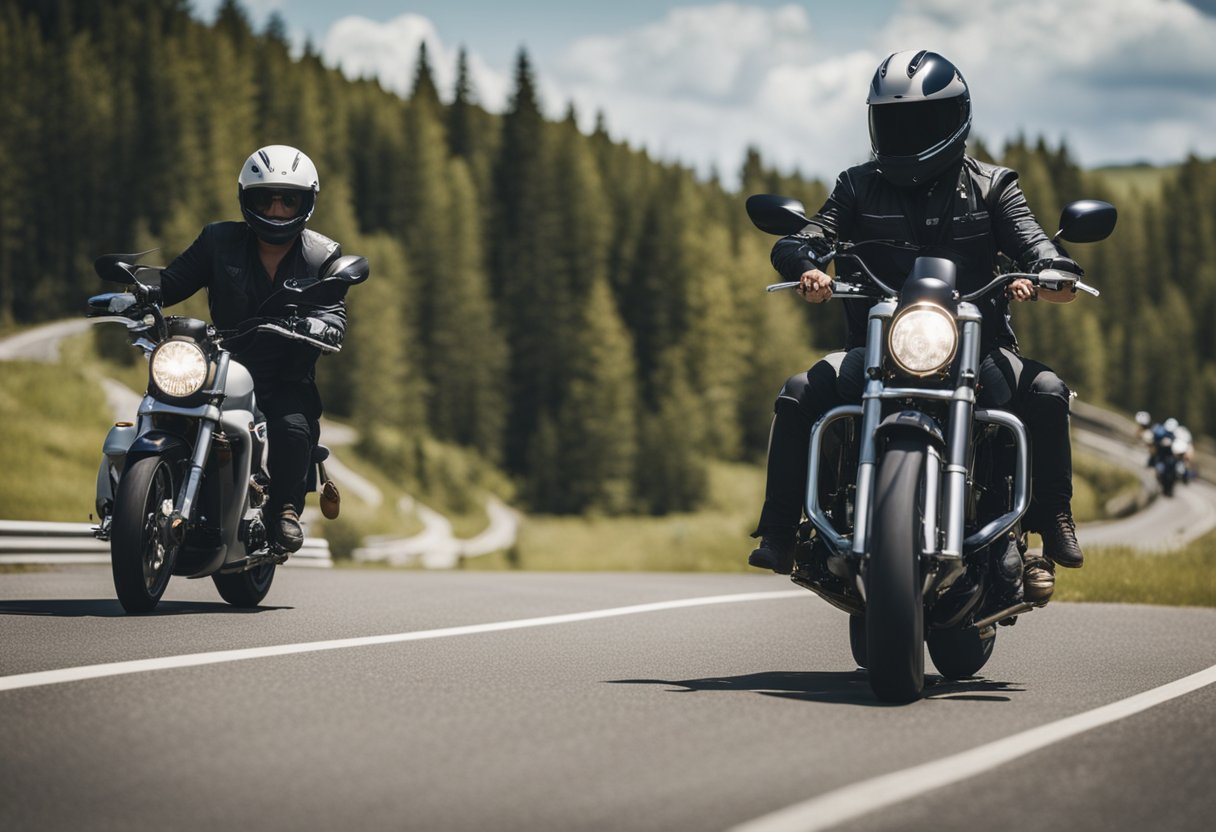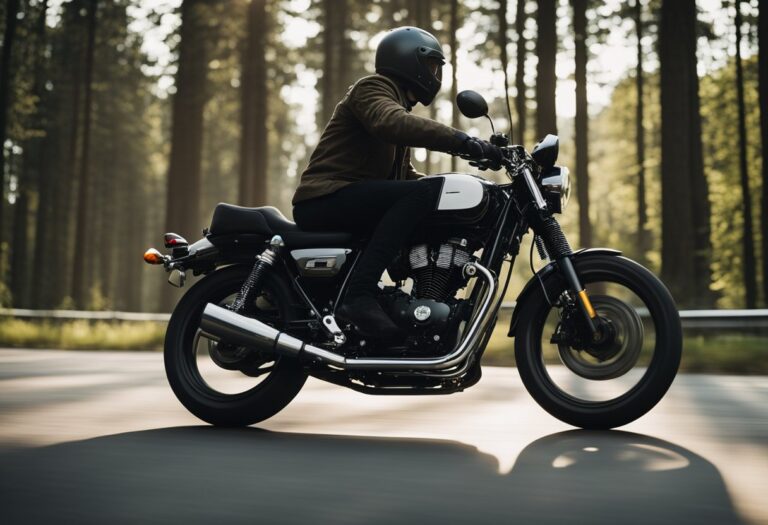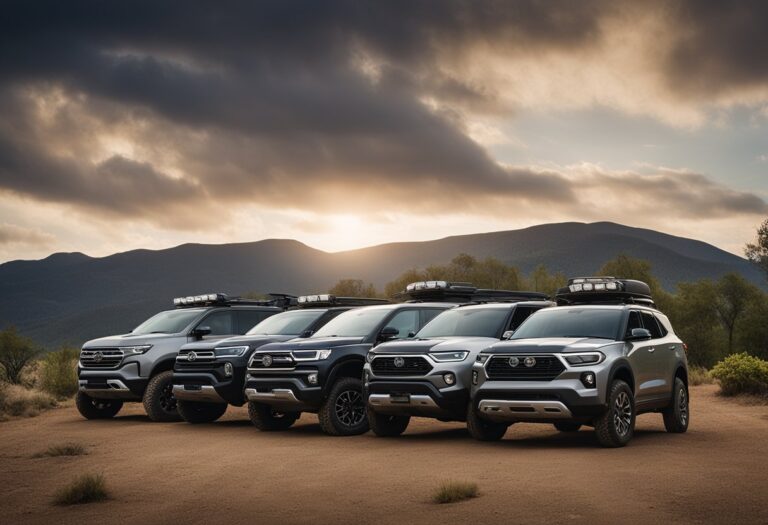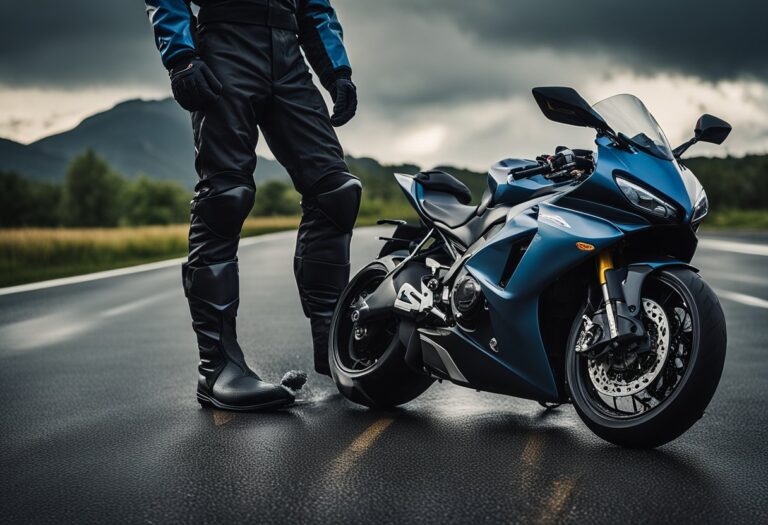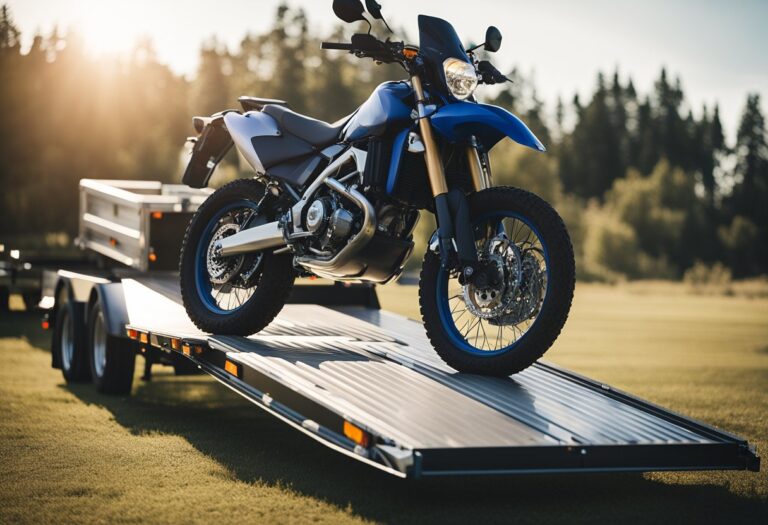Guide to Motorcycle Hand Signals and Their Meanings
Motorcycles are a popular mode of transportation for both commuting and leisure activities. However, riding a motorcycle requires a unique set of skills and knowledge, including the ability to communicate effectively with other riders. Hand signals are a crucial aspect of motorcycle communication, allowing riders to convey important messages without the need for verbal communication.

In this article, readers will learn about the basics of motorcycle hand signals, including essential signals for group riding and rider indication. The article will also cover visual communication techniques and how to adapt hand signals for different contexts. Additionally, legal considerations for hand signaling will be discussed, along with answers to frequently asked questions.
Key Takeaways
- Motorcycle hand signals are an essential aspect of communication between riders.
- Essential hand signals for group riding and rider indication should be understood by all riders.
- Adapting hand signals for different contexts and understanding legal considerations is important for safe and effective communication.
Basics of Motorcycle Hand Signals

Importance of Hand Signals
Hand signals are an essential part of motorcycle riding. They allow riders to communicate with each other without the need for verbal communication, which can be difficult to hear over the noise of the engine and wind. Hand signals are also useful in situations where riders are unable to communicate verbally, such as when riding in a group or when wearing a full-face helmet.
Using hand signals is not only important for communication, but it is also a matter of safety. Riders who fail to use hand signals may put themselves and others at risk. For example, failing to signal a turn or lane change can cause confusion and lead to accidents.
Common Hand Signal Mistakes
While hand signals are a useful tool for communication and safety, they are only effective if used correctly. Common mistakes include using the wrong signal or failing to use a signal altogether.
One common mistake is using the wrong signal for a turn. Riders should use their left hand to signal a left turn and their right hand to signal a right turn. Using the wrong signal can be confusing and lead to accidents.
Another common mistake is failing to use a signal at all. Riders should always use hand signals when turning, changing lanes, or slowing down. Failing to signal can cause confusion and lead to accidents.
Overall, it is important for riders to understand and use hand signals correctly. By doing so, they can communicate effectively with other riders and ensure their own safety on the road.
Essential Hand Signals for Group Riding

Group riding can be a thrilling and enjoyable experience, but it requires a certain level of communication between riders to ensure everyone’s safety. Hand signals are an essential part of this communication and can help riders communicate effectively without having to rely on verbal communication. Here are some essential hand signals for group riding:
Starting the Ride
Before starting the ride, it’s important to make sure everyone is ready to go. The leader should signal to the group to start the ride by holding up their left hand with their fingers spread out. This signal indicates that it’s time to start the engines and get ready to ride.
Changing Lanes
When changing lanes, it’s important to signal your intentions to the riders behind you. To signal a lane change, the rider should hold their left arm out straight with their index finger pointing in the direction they intend to go. This signal should be held until the rider has completed the lane change.
Turning
Turning signals are perhaps the most important hand signals for group riding. To signal a left turn, the rider should hold their left arm out straight with their index finger pointing left. To signal a right turn, the rider should hold their left arm out and point their index finger up. It’s important to hold these signals until the turn is complete.
Stopping
When it’s time to stop, the leader should signal the group by holding their left arm out and pointing down. This signal indicates that it’s time to slow down and come to a stop. It’s important to use this signal well in advance of the actual stop to give riders behind you time to react.
Speed Adjustment
Sometimes, it’s necessary to adjust the speed of the group to accommodate traffic or road conditions. To signal a decrease in speed, the leader should hold their left arm out and move it up and down in a pumping motion. This signal indicates that it’s time to slow down. To signal an increase in speed, the leader should hold their left arm out and move it up and down in a waving motion. This signal indicates that it’s time to speed up.
In conclusion, hand signals are an essential part of group riding and can help riders communicate effectively without having to rely on verbal communication. By using these essential hand signals, riders can ensure everyone’s safety and make the most of their group riding experience.
Hand Signals for Rider Indication

Hand signals are a crucial aspect of motorcycle riding, especially when riding in groups. They allow riders to communicate important information with each other without having to rely on verbal communication. In this section, we will discuss the hand signals that riders can use to indicate various situations.
Pointing Out Hazards
When riding in a group, it is important to keep an eye out for hazards on the road. These hazards can include potholes, debris, or other obstacles. To alert other riders to these hazards, a rider can use the following hand signals:
- Pointing Downward: This signal indicates that there is a hazard on the road ahead. Riders should slow down and proceed with caution.
- Pointing Upward: This signal indicates that there is an overhead hazard, such as a low-hanging branch or a bridge with low clearance.
- Pointing to the Side: This signal indicates that there is a hazard on the side of the road, such as a parked car or pedestrian.
Indicating Stops for Fuel or Rest
During long rides, riders may need to stop for fuel or rest. To indicate that they need to make a stop, a rider can use the following hand signals:
- Tapping the Helmet: This signal indicates that the rider needs to make a stop for a restroom break or to get something to eat.
- Patting the Tank: This signal indicates that the rider needs to make a stop for fuel.
Signaling Technical Issues
Sometimes, a rider may experience technical issues with their motorcycle. To signal to other riders that they need to stop for maintenance or repairs, a rider can use the following hand signals:
- Tapping the Seat: This signal indicates that the rider needs to stop to adjust their seat or fix a loose part.
- Tapping the Side of the Motorcycle: This signal indicates that the rider needs to stop to fix a technical issue with their motorcycle.
By using these hand signals, riders can communicate important information with each other and ensure a safe and enjoyable ride.
Visual Communication Techniques

Hand Signal Visibility
When using hand signals to communicate with other riders, it is important to ensure that the signals are clearly visible. This can be achieved by positioning the hand in a way that is easily seen by the other rider. For example, when making a left turn, the left arm should be fully extended and pointing in the direction of the turn.
Signal Timing
Timing is also important when using hand signals. Riders should ensure that they give the signal with enough time for the other rider to react accordingly. For example, when slowing down, the signal should be given well in advance to allow the other rider to slow down safely.
Ensuring Comprehension
To ensure that the hand signals are understood by the other rider, it is important to use clear and concise movements. Riders should avoid making exaggerated or confusing movements, as this can lead to misinterpretation of the signal. Additionally, riders should make eye contact with the other rider to ensure that the signal is understood.
Using these visual communication techniques can help ensure that hand signals are effectively used to communicate with other riders on the road.
Adapting Hand Signals for Different Contexts

City Riding
In city riding, hand signals are particularly important as there are many distractions and obstacles that can make communication difficult. Riders should use clear and concise hand signals to communicate with their fellow riders. Some common hand signals for city riding include:
- Pointing to the left or right to indicate a turn
- Holding up a hand to indicate a stop
- Patting the top of the helmet to indicate a hazard or obstacle ahead
Highway Riding
On the highway, hand signals are often used to communicate with other riders over long distances. It’s important to use large and clear hand signals to ensure that they can be seen from a distance. Some common hand signals for highway riding include:
- Pointing to the left or right to indicate a lane change
- Holding up a hand to indicate a stop
- Tapping the side of the helmet to indicate a need for a break
Night Riding
When riding at night, hand signals become even more important as visibility is reduced. Riders should use reflective materials and bright colors to make themselves more visible, and use clear and concise hand signals to communicate with their fellow riders. Some common hand signals for night riding include:
- Pointing to the left or right to indicate a turn
- Holding up a hand to indicate a stop
- Tapping the side of the helmet to indicate a need for a break
By adapting hand signals to different contexts, riders can communicate more effectively with their fellow riders and reduce the risk of accidents.
Legal Considerations for Hand Signaling

When it comes to using hand signals while riding a motorcycle, it’s not just a matter of safety, but also a matter of legality. In many states, using hand signals is required by law.
For example, in California, it is mandatory for motorcyclists to use hand signals when turning or changing lanes. Failure to do so may result in a traffic citation. Other states have similar laws in place, so it’s important for riders to familiarize themselves with the specific regulations in their state.
It’s also worth noting that while hand signals can be an effective way to communicate with other drivers, they should never be relied upon as a substitute for proper signaling equipment on the motorcycle. Riders should always ensure that their turn signals and brake lights are in working order and use them in conjunction with hand signals.
Additionally, riders should be aware of the potential risks involved in using hand signals while riding. Taking one hand off the handlebars can affect balance and stability, especially at high speeds. Riders should practice using hand signals in a safe and controlled environment before attempting to use them on the road.
Overall, while hand signals can be a useful tool for communication on the road, riders should always prioritize their safety and follow the laws and regulations in their state.
Frequently Asked Questions

What are the essential motorcycle hand signals every rider should know?
There are several hand signals that every motorcyclist should know to communicate with other riders on the road. These include signals for turning left or right, slowing down, stopping, and hazard warnings. It is crucial to learn these signals and use them appropriately to ensure safety on the road.
How can a motorcyclist signal a hazard on the road to other riders?
To signal a hazard on the road, a motorcyclist can use the hand signal for “pointing.” The rider points to the hazard with his or her left hand, indicating the direction of the hazard. This signal is essential to warn other riders of any potential dangers on the road.
What is the proper way to indicate a turn using motorcycle hand signals?
To indicate a turn, a motorcyclist can use the appropriate hand signal. To signal a left turn, the rider extends his or her left arm straight out to the side. To signal a right turn, the rider extends his or her left arm and points upward. It is crucial to use these signals in advance to give other riders enough time to react.
Can hand signals be legally used as a substitute for turn signals on a motorcycle?
In most states, hand signals can be used as a substitute for turn signals on a motorcycle. However, it is always recommended to use both hand signals and turn signals to ensure maximum visibility and safety on the road.
How do motorcyclists use hand signals to communicate with each other during group rides?
During group rides, motorcyclists use hand signals to communicate with each other. These signals include indicating the need for a rest stop, indicating a change in formation, or warning of any hazards on the road. It is essential to learn these signals and use them appropriately to ensure safety and smooth communication during group rides.
What hand signal do motorcyclists use to show respect or greet one another?
To show respect or greet one another, motorcyclists use the “biker wave” or “motorcycle wave.” This is a simple wave with the left hand extended downward, often used when passing another rider on the road. It is a common way for riders to acknowledge and show respect for each other on the road.
